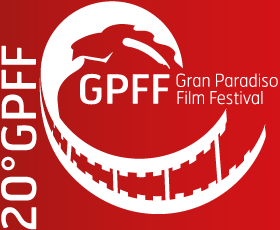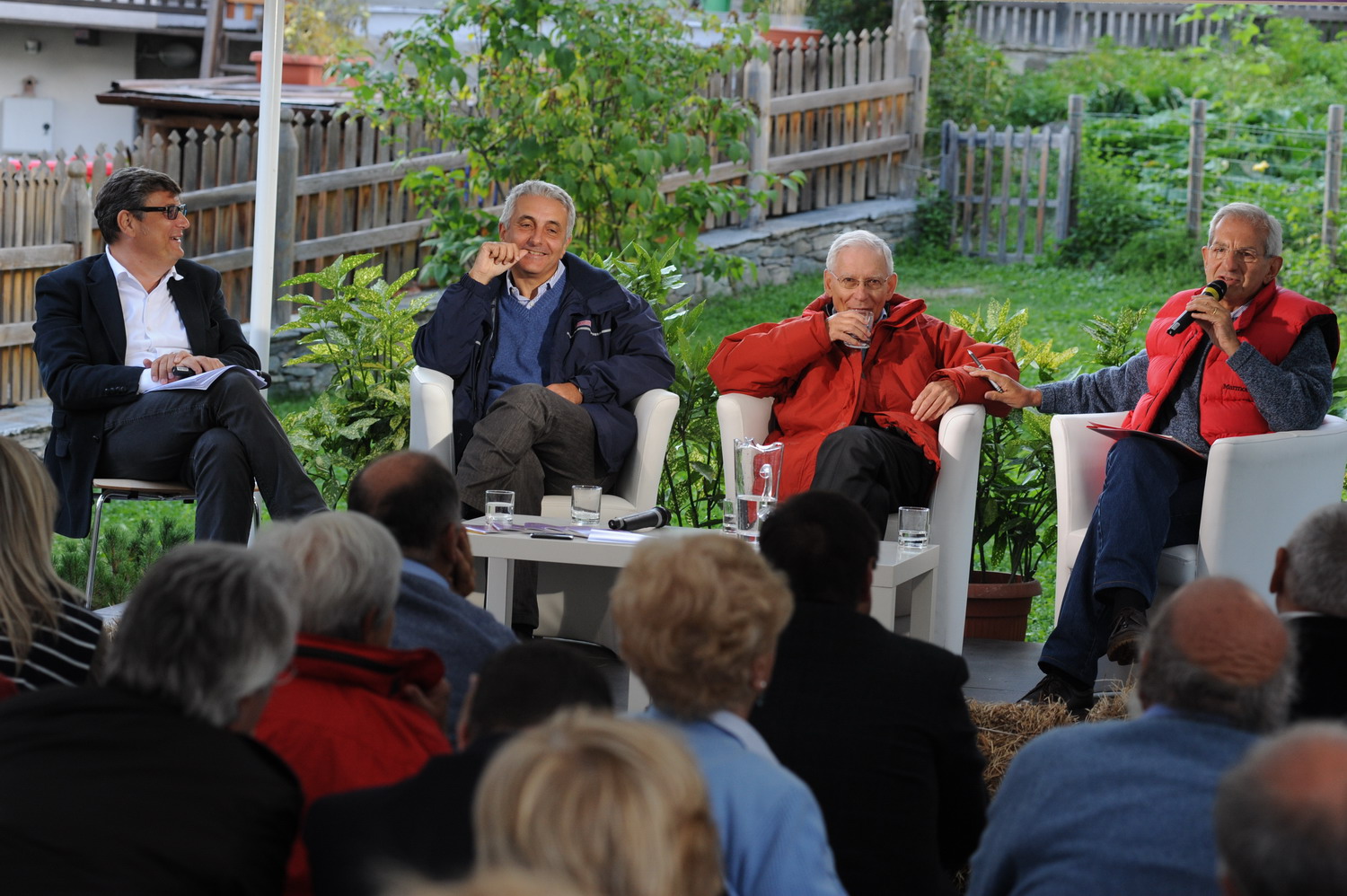Constitutional reforms and the future of the autonomous regions. A debate encounter held in Cogne on Friday 30 August 2013
The present state of constitutional reforms and the future of the autonomy granted to Aosta Valley, in the context of the review of Chapter V of the Constitution. These are some of the topics debated on Friday 30 August in the garden of Maison de Cogne Gérard-Dayné, by Luciano Violante and Valerio Onida, two of the 'wise men' nominated by Giorgio Napolitano, the President of the Republic, as members of the Commission for Constitutional Reforms, and by Gaetano Quagliariello, the current Minister for Constitutional Reforms. The debate, moderated by Professor Fabrizio Cassella, Chancellor of the University of Aosta Valley, was included in the conference program of 'De Rerum Natura' at this year's edition of the Gran Paradiso Film Festival, organised by Fondation Grand Paradis.
Introducing the illustrious guests to the large audience, amidst whom was the President of Aosta Valley, Augusto Rollandin, was Luisa Vuillermoz, the Director of Fondation Grand Paradis. The afternoon began with the lectio magistralis by Professor Valerio Onida, former President of the Constitutional Court, on the 'Nature of the Constitution'.
The Constitution – argued Valerio Onida – is the result of the past conquests but also an ongoing, open project. It sets on paper certain principles and universal values which transcend the transient circumstances.
Agreed that the main principles of the Constitution are not subject to discussion, Minister Quagliariello explained why the moment has come to review the Chart, spurring us to reflect on our institutions in order to help the country out of the present deadlock, comparable to a form of anarchic policentrism.
All the speakers agreed on the need to preserve the peculiarities of the regional government. The Minister argued that the review process of the Constitution should preserve the concept of autonomy, albeit modified and updated to suit the current times. The State must equalize as well as differentiate, according to need.
Besides stressing the reasons for Aosta Valley's autonomy, Professor Onida mentioned the region as a model. It was the first to be created in Italy, in 1945, without any kind of legislative competence, endowed only with several administrative ones. It had in fact from the start a strong tendency to transfer the administrative functions from the centre to the periphery. Onida mentioned one of the peculiarities of Aosta Valley: the President of the Region is also the Prefect, in other words he represents the State. This is, according to Onida, a cultural peculiarity to preserve: the autonomous regions should be useful to draw citizens and administration closer together.
Referring to the work of the Commission, the President of Aosta Valley, Augusto Rollandin, expressed his wish that the competences in regional and state matters, as they are worded in article 117 of the Constitution, be clarified. We expect - Rollandin argued - that the future changes to the Constitution will enhance the role of the regions.
Finally, Luciano Violante discussed the different hypotheses concerning the Commission's study.
We all agree on the need to overcome the present form of bicameralism, allowing instead the Chamber to be responsible for the fiduciary relation and the Senate to be representative of the territory.
About the article 117 the former President of the Chamber explained how the prevalent opinion within the Commission is to transfer the competences on certain matters, as the large networks, to the State, and to increase the regional competences in order to reduce overlapping or contention. The 'wise men' regard Germany, after the 2006 reform, as the model.
From Germany comes the idea of inserting a provision in the Constitution to allow the State to intervene in the matter of regional competences, when the circumstances require it, in order to preserve the economic and social coesion of the nation.
Source: Press Office of the Autonomous Region of Aosta Valley
Click here to see the video press release.
The full video of the debate encounter is available here.

